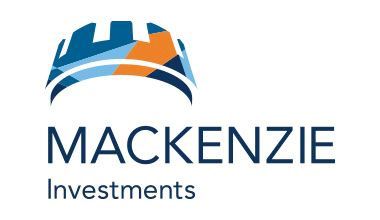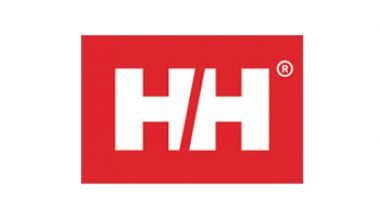Gliding Start
IGNITE THE SPARK
The Gliding Start stage focuses on learning the fundamental movement skills and linking these fundamental movement skills together to begin participation in structured physical activity at the end of this stage.
- Boys 1-6
- Girls 1-6
- Snow Stars Level 1 - 3
- No formalized competition
- Growth and Development
- Fundamental Movement Skills
- Toddlers
- Age 2 to 4 Years
- Age 4 to 6 Years
- Physical Training for Para-Alpine
Growth and Development
- A child will experience very rapid growth during infancy and slow down their growth rate after age two. Measurement of standing height and weight should occur at every birthday to monitor and track a child’s growth rate.
- During the first few years of life, there is a well-established pattern of developing movements from sitting to crawling followed by children pulling themselves up on furniture until they begin to balance on two feet and start walking on their own.
- Eventually, children start to take their first few steps leading to running, jumping, kicking, catching, hitting, throwing and performing all activities of a healthy five and six-year-old.
- When skiing, young children will be top heavy with a helmet on, using a broader stance on skis to create a wide base of support until the child is strong enough support the weight of their head and helmet.
Two things need to occur for children to learn all of the necessary fundamental movement and sports skills. Their bodies need to mature, and they require opportunities to practice and explore their limitations in a safe environment. Every child develops at own their individual pace; there are no milestones when it comes to child development.
Bones and Muscles
As children develop, the stress they put on their bones and muscles triggers the strengthening of both bones and muscles.
Nerve Development
The process whereby a nerve can conduct a signal along the full length of the nerve is usually complete around age two. More controlled movement patterns are a sign that the nerves can transport a signal along the entire length of a nerve resulting in the faster acquisition of gross and fine motor movement patterns.
Brain Development
Children experience a time of massive brain development with the significant production of brain cells resulting in a considerable number of new connections made between brain cells.
Improved Senses
The ability of a child to use their sense of sight, balance, and ability to know where their limbs are without being able to see them becomes more proficient as the child develops their sensory nervous system through playful experiences.
Fundamental Movement Skills
- Encourage children to run with stops and starts and changes in direction. Play tag!
- Play catching games with a wide variety of soft objects and balls.
- Play games making shapes, upside down and right side up.
- Have children mimic animal movements like slithering like a snake or rolling pins on the floor or in grassy areas.
- Yoga is excellent for developing mobility and awareness.
- Play throwing games by having children aim at a target using both their left and right hands.
- Play bouncing games, balance on one foot and the advancing to weight transfer and skipping.
- Play jumping games where children jump into the air and make shapes like stars or spin in the air, testing the limits of how high and how far they can go. Make sure they land on the ball of the foot initially followed by the heel, ankle, knee and hip to ensure children are learning proper landing mechanics.
- Introduce children to sliding snow sports like skiing and skating so they learn how to push against the surface and glide.
- Have children learn how to ride bikes to develop dynamic balance.
Learn to teach the fundamental movement skills with one of the Coaching Association of Canada's Fundamental Movement Skills Workshops for Parents and Coaches.
Toddlers
When children are ready, they begin to walk and need plenty of obstacle-free, hard surface space to practice walking. Walking is the natural part; often children are challenged by trying to stop due to a lack of full body control.
Children can develop body control through games like follow the squiggly line drawn in chalk or made with masking tape. Standing face to face and dancing helps children develop a sense of rhythm and coordination.
As children near the age of 2 years, they are ready to improve balance including trying to stand on one foot.
Children require supervision in all the above activities.
Age 2 to 4 Years
Ages 2 to 4 mark a period of rapid improvement in physical skills. Running improves quickly, and children can begin to throw smaller objects with little to no control.Children at this stage of development need to try new things in a safe and stimulating environment.
Children are visual learners who need to see other children and adult role models being active and enjoying physical activity:
- With the help of an adult, children can start to slide and skate on skis.
- Children can begin to learn how to catch soft objects along with learning how to roll and throw.
- Children discover how to kick lightweight playground and beach style balls as a fun activity.
- Children can improve hitting ability by hitting a stationary ball or a ball that is rolling slowly directly to them.
- Children start tumbling, spinning, and rolling which assists in brain development and the ability to keep track of their bodies' orientation in time and space.
- Hopping, jumping, and other locomotive skills such as riding a "strider" bike or tricycle allow for rapid development of locomotive and balance skills.
- Children start to jump over objects and down from lower heights while beginning to climb objects at the playground consistently.
- Playing in shallow pools under supervision begins the process of making children comfortable in the water. Some children have already started swimming.
Age 4 to 6 Years
During these two years, children are in a period of refining and extending the skills they have been learning.
For example, running and kicking become a more fluid motion. The child's balance is improved, allowing them to explore their physical capabilities in a safe environment.
Children should start to play complementary sports and participate in structured on-snow training through local recreational organizations and ski clubs.
Physical Training for Para-Alpine
Much like the development of a long term plan for skiing, the same must be looked at for the physical aspect of a participant or athlete. For the Para-Athlete we must make certain considerations based on the physical impairment of the individual. It is necessary to realize that due to the nature of differences between each athlete’s needs, every aspect of the program will be considered on an individual basis. Training does not differ from an able-bodied regimen, however extra considerations should be taken into account for each category.
VISUALLY IMPAIRED
Goals: develop proprioceptive awareness and balance to increase confidence in spatial moving, if possible, increase chemistry and communication with a guide.
Considerations:
- Not usually any physical restrictions, no modifications on testing procedures.
- Need to educate and progress through bodyweight movements to movements with external objects and object manipulation.
- Landing and jumping progressions can help to build spatial awareness, which can increase balance and coordination.
- Outdoor conditioning workouts will most often require a guide with experience.
SITTING
Goals: Develop and improve sitting positioning, balance, core strength, scapular, rotator cuff and potentially hip stabilizers.
Considerations:
SAFETY: GAIN AWARENESS OF THEIR ASIA (AMERICAN SPINAL INJURY ASSOCIATION) STATUS AND LESION LEVEL. GAIN A CLEAR UNDERSTANDING OF THEIR CURRENT FUNCTION (BOTH SENSATION AND MOTOR) PRIOR TO STARTING A PROGRAM.
- Orthostatic hypertension: gradually change positions.
- Autonomic dysreflexia (T6 and above): ensure they have used the washroom prior to their workouts and there are no bladder infections, restrictive clothes or other potentially noxious stimuli present.
- Respiratory function: do they need an assisted cough.
- Caution with overtraining as this will affect their ability to carry out activities of daily living.
- May need more help than normal with the movement of themselves and equipment around the weight room or training area
- Be aware of areas without feeling and rubbing, pressure points during certain movements.
STANDING
Goals: Address muscular imbalances that may occur. Engage and encourage proper movement patterns, but understand that they may not be perfect.
SAFETY: IF WORKING WITH AN AMPUTEE, ENSURE THAT SKIN CARE IS MANAGED, PARTICULARLY IF TRAINING IN A HOT ENVIRONMENT.
- Understand the differences in the range of motion, strength and optimal positioning with each athlete.
- All of the facets of training (strength, power, agility, etc.) can be trained, however, they all may look different between athletes and possibly within an athlete (i.e. left and right sides).
- Some athletes (eg. Cerebral Palsy or stroke) may need different movements for each side of their body, don’t neglect the less functioning side.


